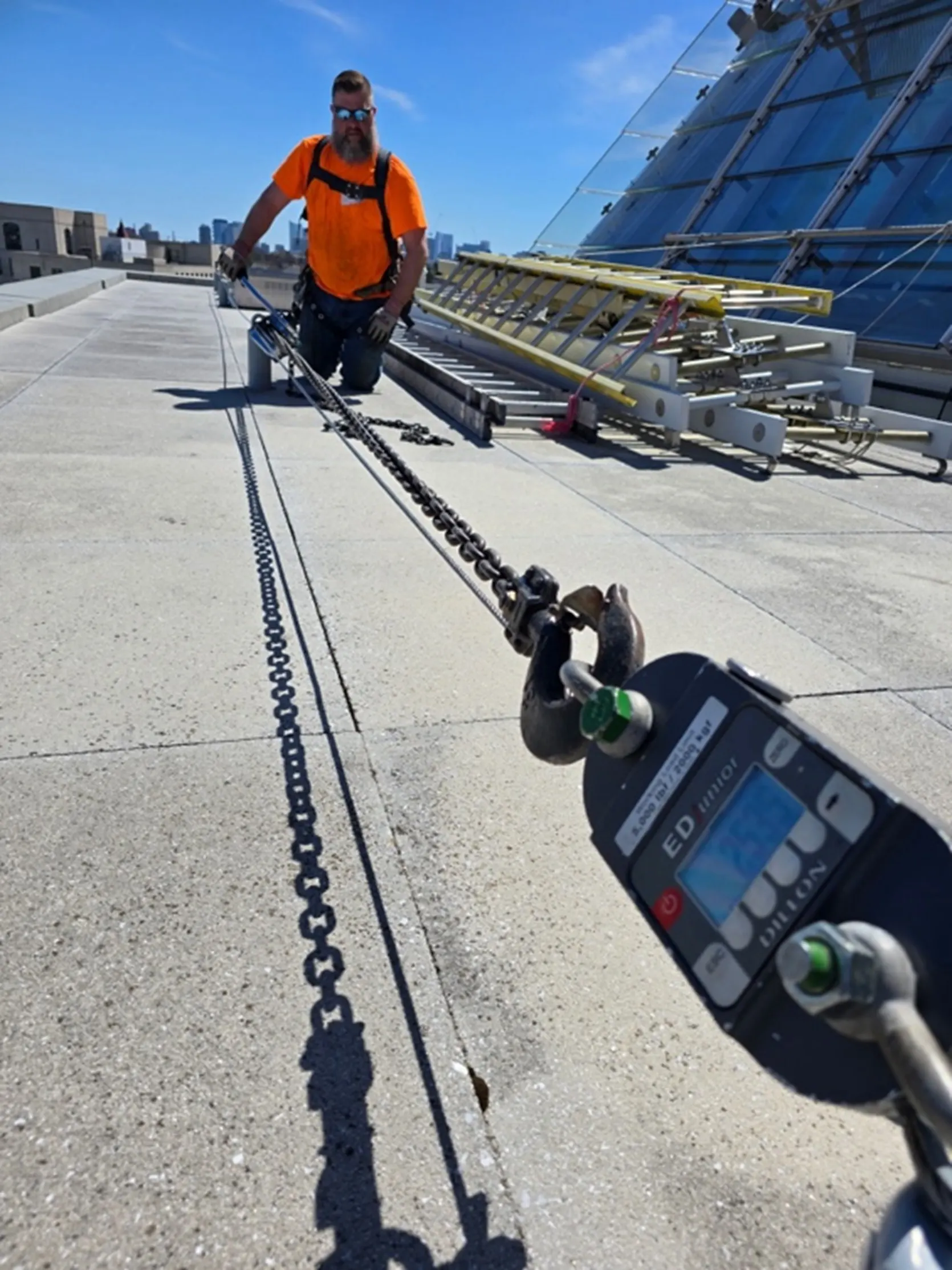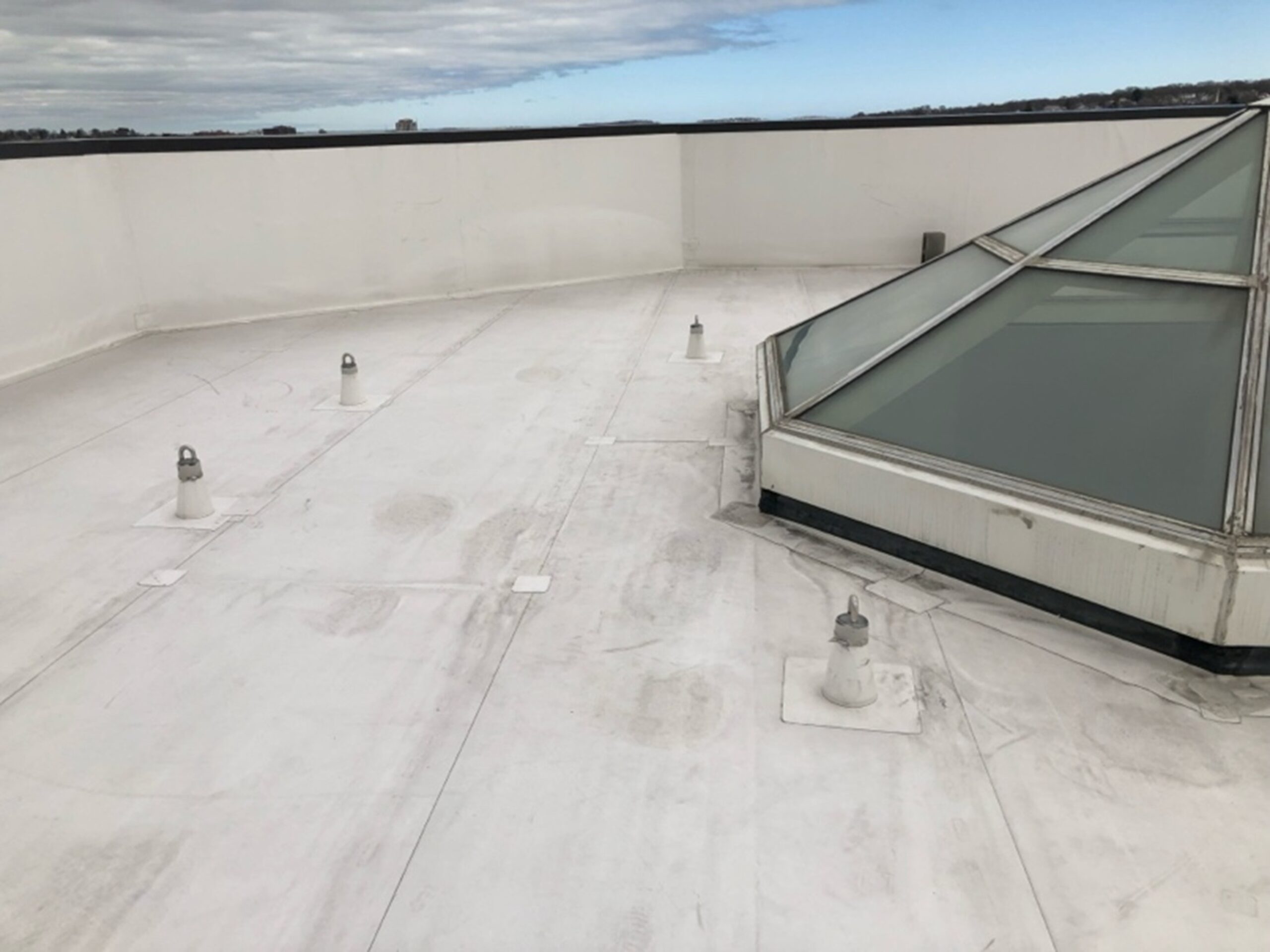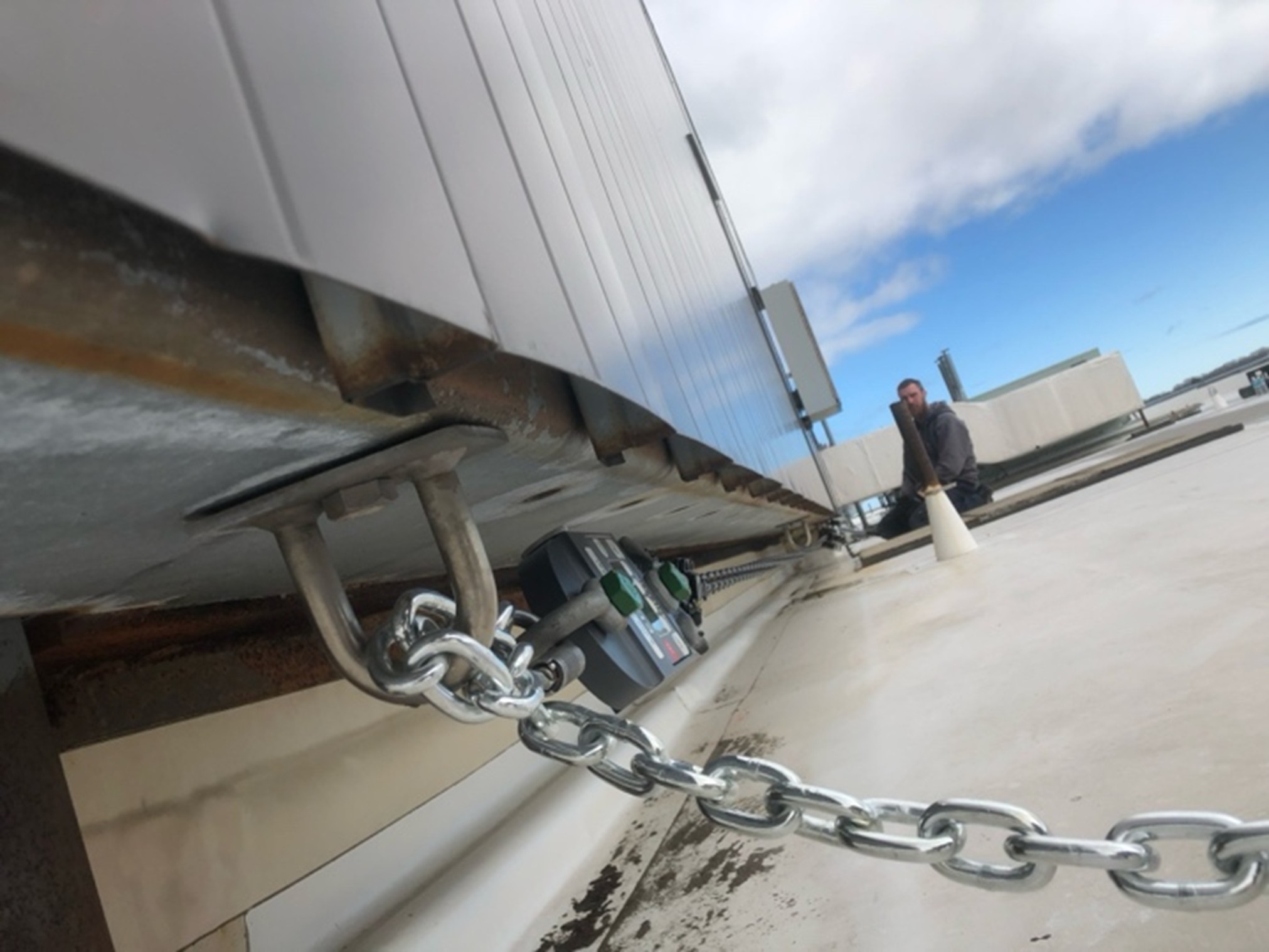Everything Property Managers Need to Know About Roof Anchor Design, Installation and Testing Requirements

As a property or facilities manager, balancing tenant satisfaction with regulatory compliance can be a delicate task. On one hand, you’re focused on promptly addressing tenant needs and ensuring their satisfaction; on the other, you’re tasked with maintaining compliance with OSHA standards to protect the safety and integrity of your building. One crucial yet often overlooked safety feature is the roof anchor system. These anchors are vital for supporting workers who access the building’s exterior, such as window washers, water proofers, and pressure washers.
At Above The Rest, we specialize in roof anchor inspections to help facility managers and building owners ensure compliance with safety regulations and safeguard workers from potential falls—while also meeting the expectations of tenants for a safe, well-maintained environment.
In this post, we’ll dive into the importance of roof anchor testing, the OSHA regulations that govern it, and the key requirements for property managers to keep in mind.
What Are Roof Anchors and Why Are They Important?
Roof anchors are vital components of fall protection systems for workers operating at heights. Typically used by maintenance professionals, these anchors serve as secure attachment points for personal fall arrest systems. These systems are designed to stop workers from falling and minimize injury if a fall occurs.
For our team at Above The Rest, roof anchors are essential when washing windows, waterproofing, or performing restoration, maintenance or repairs services on building facades. Without properly installed and tested roof anchors, maintenance workers are at serious risk. That’s why testing and certification are crucial for the safety of everyone involved.

OSHA Regulations on Roof Anchor Safety
The Occupational Safety and Health Administration (OSHA) mandates strict guidelines for fall protection in the workplace, including when workers are at heights of six feet or more above a lower level. As per OSHA Subpart M, safety measures such as roof anchors must be in place for any work at elevated heights.
One of the most widely used fall protection systems is the Personal Fall Arrest System. This system is designed to arrest a worker’s fall by safely stopping their descent. OSHA’s standard 29 CFR 1926.502(d) outlines how fall protection systems must be set up, and it’s critical that roof anchors be part of this system.
Key Requirements for Roof Anchor Testing, Certification, and Inspections
To comply with OSHA standards and ensure safety, roof anchors must be regularly tested, inspected, and certified. According to OSHA 1910.27(b)(1)(i), building owners must inform employers in writing that roof anchors have been properly identified, tested, certified, and maintained. This includes both annual inspections and periodic certifications.
Annual Inspections involve a visual check by a qualified professional to assess the anchor for any signs of damage, wear, or corrosion. The inspection ensures the anchor is securely attached to the structure and functioning properly. This is an important first step in maintaining the integrity of the anchor system.
Load Testing, required at least every 10 years for certification, involves applying a static or continuous load to the anchor using a hydraulic testing device. The load is gradually increased until it meets the specified weight in the Load Test Prescription. This verifies that the anchor can support the necessary weight—at least 5,000 pounds in any direction per worker attached—without failure. For adhesive or expansion anchors, load testing must occur every five years.
These inspections and tests are critical to ensure roof anchors are safe, reliable, and compliant with OSHA standards, ultimately providing fall protection for workers.
Who Is a “Qualified Person”?
When it comes to inspections and certifications, OSHA has clear guidelines on who can perform these tasks. According to OSHA 29 CFR 1926.32(l), a “qualified person” is someone with the proper experience, knowledge, and training to solve problems related to the worksite and equipment. This includes having a recognized degree, certificate, or extensive on-the-job experience.

At Above The Rest, our team consists of qualified professionals who are trained to perform annual roof anchor inspections as well as the necessary pull tests for 5-year or 10-year recertifications.
Compliance with OSHA Standards
OSHA requires that rooftop safety anchors must be capable of supporting at least 5,000 pounds (22.2 kN) per employee attached. Additionally, the anchor system must maintain a safety factor of at least two. This means that, for a fall arrest system to meet OSHA requirements, it must be capable of withstanding a maximum force of 3,600 pounds (16 kN) of force to ensure worker safety.
The requirements are strict because a fall from height can result in serious injury or even death. By ensuring your building’s roof anchors are tested and certified, you’re protecting both your maintenance workers and your property.
Roof Anchor Design & Installation: The foundation of Fall Protection
At Above The Rest, our mission is to provide end-to-end fall protection solutions that prioritize safety, compliance, and efficiency. That’s why we’ve expanded our services to include custom roof anchor design and installation, bringing every piece of the puzzle under one roof.
Our engineers, project managers and field technicians are more than just construction experts — they’re highly trained professionals with first-hand experience in a wide range of fall arrest, work restraint, and fall protection systems. From anchor point selection and location to risk assessments, hazard surveys, engineering, fabrication, and installation, our team ensures your system is fully tailored and compliant.
Permanent Roof Anchors
Roof anchors are essential for securing workers operating at height. Whether it’s for window washing, facade maintenance and repairs, or rooftop access, properly installed anchor points are critical.
We specialize in a range of anchor types, including:

Vertical Steel Pier Anchors are the most commonly used option, these anchors are designed with custom base plates to suit your building’s structure. Ideal for:
• Window washing
• Suspended maintenance
• Rooftop tie-back systems
U-Bar Anchors are typically shorter and more compact than pier anchors, U-bars can be fixed or swivel-mounted. These anchors are best suited for:
• Rooftop fall protection
• Compact tie-off points where space is limited
Why Choose Above The Rest for Roof Anchor Design, Installation and Testing?
At Above The Rest, we’re more than just installers — we’re your end-to-end fall protection partner. From design to installation, annual visual inspections, and certified load testing, we handle everything under one roof to deliver a complete and code-compliant safety system.
What Sets Us Apart?
What sets us apart? We’re more than just installers. Our team understands and the importance of roof safety, because we plan on using the equipment to service your property:
- Proper fall protection equipment usage
- System component inspection requirements
- Correct Installation Location
By offering in-house design services, including full system layout based on your building’s roof plans, elevations, and sections, we create roof anchor systems that are:
- Fully OSHA-compliant
- Tailored to your building’s structure and use
- Efficient for workers and cost-effective for owners
Complete Roof Anchor Services
We provide everything needed to ensure your system is safe, reliable, and ready for long-term performance:
- Custom Roof Anchor Design
- Professional Installation of galvanized steel pier and U-bar anchors
- Annual Visual Inspections to check for damage, corrosion, and wear
- Load Testing (Pull Testing) to confirm each anchor meets OSHA’s 5,000 lb standard
- Full Certification & Reporting for peace of mind and compliance
One Company. One Solution.
Working with Above The Rest means no juggling multiple vendors or worrying about gaps in your system. Our all-in-one approach ensures consistency, accountability, and the highest quality across every stage of the project.
Whether you’re outfitting a new building or bringing an existing system up to code, we’re here to deliver safe, smart, and streamlined fall protection solutions.



